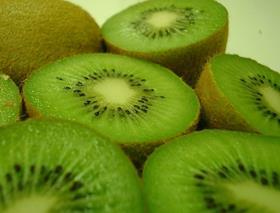
As the Italian kiwifruit export season gets underway, access to one of its more remote but steady markets hangs in the balance.
Biosecurity authorities in New Zealand, which imports Italian kiwifruit in the off-season to its own sizeable production, are reportedly considering a ban on the fruit amid fresh industry concerns over the spread of the bacterial disease canker in Lazio, Italy’s leading kiwifruit-growing area.
“Access `for Italian kiwifruit` has not been formally suspended, but we were advised by MAF a couple of weeks ago that it could be,” said Kevin Nalder, CEO of New Zealand Fresh Produce Importers Association, on Monday. “We expect them to confirm what is happening this week.”
Brendan McDonald, senior advisor on the board of standards at Biosecurity New Zealand, told Fruitnet.com that the Ministry of Agriculture and Forestry (MAF) is this week assessing a recent research report on kiwifruit canker from Plant & Food Research – and it will announce its decision on whether to revise import regulations on Italian kiwifruit early next week. MAF has advised industry bodies that a meeting will be held in Auckland on Friday to discuss the situation.
Although the recent spread of kiwifruit canker has caused extensive damage to production in Lazio, the disease is confined to the trees, and the conventional scientific thinking is that it cannot be carried on mature fruit.
Nevertheless, with kiwifruit being central to New Zealand’s horticulture industry, there is pressure on the government to review the latest findings to ensure there is zero risk to local producers.
“Canker has been in Asia for many years and it’s been in Italy for a while, although it’s spread quite a bit there `in Lazio` since 2007/08,” said Mr McDonald. “Plant & Food has recently written a paper on kiwifruit canker. We’ve received that report and our MAF scientists are reviewing it this week to see if there is anything new in the research.'
If it is concluded that the bacterium could be vectored on the fruit or through other means, there is a grave threat that a ban will be imposed, according to industry sources.
With the new season starting up, kiwifruit importers in New Zealand and their export counterparts in Italy are on tenterhooks this week as they await information from Biosecurity New Zealand on the measures it plans to take.
New Zealand imported around 1,000 tonnes of kiwifruit from Italy last year, according to industry sources.
“It’s grown to a reasonable amount over the last 10 years,” said Mr Nalder. “It’s an established trade with a small window from around November to March around our domestic season.”
If Italian kiwifruit imports were suspended, the alternative supply options would be very thin on the ground, he noted. “French kiwifruit is not allowed in here and there may be some opportunity out of US, but I don’t think there’s a lot of volume,” Mr Nalder added.
While New Zealand is a modest market for Italian kiwifruit, there are also some concerns in the industry about how the reaction of the New Zealand government may impact on Italy’s access to other larger markets that keep a tight rein on quarantine issues, such as Australia and Taiwan.



